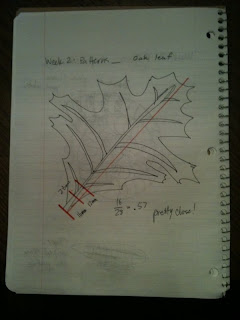Every time I visit Hidden Beach I'm struck by the same thing. Can you see it?

Brown, yes, but that is not it.
As you walk the path from the small Kenwood neighborhood the actual beach you pass by dozens of gigantic cottonwood trees many of which are close to 100 feet tall. Whenever there is any wind, I'm convinced that one of the two ton branches from any given tree is about to fall on my head. I'm a worrier, I know.
More than the height and girth of these trees, the bark is what continually surprises me the most about these ancient saplings. It's a very different kind of bark than you will find on the other trees in the area. It's chunky. It's rough. If you were able to pull a piece off, which is nearly impossible, you'd be holding what feels like a 2 x 4. I tried to stretch my hand from one groove to another and I barely covered half of it; it's really quite impressive.


Although the details get lost in the quality of the images produced by my iPhone, the width of this bark is between 4 to 6 inches, which does not include the depth to the crevice, which is another 2 inches on each side. That's some major bark.
As I said before, this landscape is dominated by these cottonwood trees; so with my Bioneer hat on, I begin to think about what makes this bark particularly beneficial to these trees within this localized habitat. To answer this question, I set out on the single-track bike path to find other examples of bark in the area.
Number 1:

The first thing you'll notice about this specimen is that it is much smaller than the other cottonwoods in the area. I will add that it's also much less prevalent (which I believe may have something to do with its bark). Each node on this tree is no bigger than half an inch wide, the gaps are also much more spacious, which I would hypothesize exposes the actual tree to more potentially harmful guests.
Number 2:

I have no idea what kind of tree this is. I'd guess an oak; the bark makes me think that it is not a smaller cottonwood. On this tree the bark pieces are fairly close together (there is little room between each piece) but, unlike the cottonwood, the bark pieces are small and relatively thin - not much thicker than half an inch. Again, I noticed a much smaller number of these trees than I did for the more dominant cottonwood.
Number 3:

This tree is out of place. Most trees in this area have some sort of rugged bark (of varying depths and widths), but this tree appears to have very little. This bark is not more than a quarter inch thick, and it wraps around the tree like a thick piece of paper.
Given the dominance of the cottonwood in this area, I assume that there is a beneficial function to the size of the bark on tree. I'm guessing that as close as this location is to water, the bark has something to do with protecting the cottonwoods from foreign invaders - the bugs! In Minnesota we know very well that the closer you get to water the more likely you are to encounter bugs.
With this hypothesis in the back of my mind I start to look around at some of the fallen trees that are no longer living. In many cases they are smaller, and ridden with holes created by woodpeckers. The cottonwoods have also lost branches from rotting, but they seem to cope much better than some of the other species that now cover the ground.
As I scanned the bark of a mighty cottonwood I noticed a bug that I've never seen before.

You can barely see it in this picture, but if you have ever seen the movie Men in Black, it looked like the bad guy bug that Will Smith and Tommy Lee Jones killed at the end of the movie. It was weird looking.
The crevice that this bug was crawling through looked like a tough place for any bird or predator to enter, but why would a tree provide such an incredible shelter for such an insect? This bug would have never lasted hiding in the bark on tree number 3. My hypothesis was busted.
Perhaps this bug, and others like it, provide a service for the tree in exchange for the shelter. What service? I have no idea... and
AskNature.org is down right now. So, we will have to take another look at that in another post.
Looking around the base of the tree I see piles of old bark degrading into the soil. Looking up I see partial limbs of former branches that are now bare and are in the process of being consumed by new bark.
Maybe the bugs pay rent by pruning the limbs of the cottonwoods that are not efficiently producing? OR, maybe the bark is so thick that the bugs are invited to eat and live there instead of the core of the tree, and then when the bark is rotten it falls to the base of the tree providing future nutrients?
I want to understand the function of this bark, so that I can apply the learning to other products and processes. Maybe this bark can be studied to produce better body armor? Or, maybe the bug-tree relationship can shed light on how we protect immigrant populations from predatory lending practices.
No answers here, today. Just a stream of questions to consider from one Bioneer to another. Either way, how cool is it that 30 minutes walking around in nature with a critical eye can raise such interesting questions and observations?




























